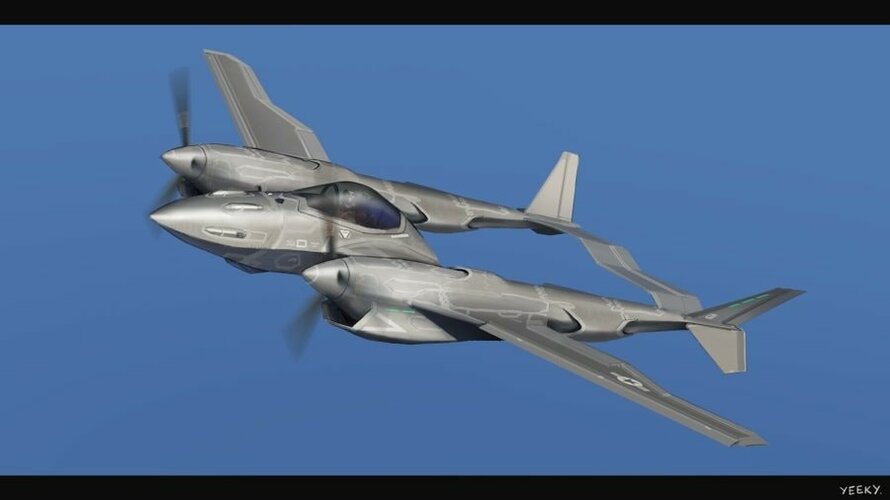You are using an out of date browser. It may not display this or other websites correctly.
You should upgrade or use an alternative browser.
You should upgrade or use an alternative browser.
earlier stealth tecnology
- Thread starter airman
- Start date
CV12Hornet
ACCESS: Secret
- Joined
- 8 January 2021
- Messages
- 401
- Reaction score
- 871
As I understand it, while radar signature reduction was possible, deliberate VLO design had to wait a. for better computers to calculate all the angles needed, and b. digital fly-by-wire, because VLO airframes tend to be necessarily unstable.
This makes it very difficult to push VLO radar stealth before the 1970s, IMO.
This makes it very difficult to push VLO radar stealth before the 1970s, IMO.
As Quiet Bird and A-12 and D-21 and others demonstrate, RCS reduction before the 70's was certainly possible. Computers allowed designers to tinker with computer designs, but before that physical models could - and were - be built and RCS tested, with adjustments made based on results. They'd never get as good as computers eventually made possible, but they could get *pretty* *good.*This makes it very difficult to push VLO radar stealth before the 1970s, IMO.
Dilandu
I'm dissatisfied, which means, I exist.
Not good enough to be of general use, though. For non-penetrating recon plane? Sure, it helped. For a tactical aircraft or penetrating recon? Nah, the meager reduction that could be fitted without dropping other characteristics below sustainable just didn't help. And "fully stealth" machine on pre-1970s tech would not be possible.As Quiet Bird and A-12 and D-21 and others demonstrate, RCS reduction before the 70's was certainly possible. Computers allowed designers to tinker with computer designs, but before that physical models could - and were - be built and RCS tested, with adjustments made based on results. They'd never get as good as computers eventually made possible, but they could get *pretty* *good.*
_Del_
I really should change my personal text... Or not.
- Joined
- 4 January 2012
- Messages
- 931
- Reaction score
- 990
I guess we simply have different ideas of general use. Ryan RPV work (penetrating) looked into RCS heavily. RAM blankets and caged mesh inlets, etc. All of which were flown operationally on various drone models. Compass Arrow shows early shaping techniques for RCS reduction, with flat bottoms, dorsal inlet, twin angled tails.Not good enough to be of general use, though
They spent time and money on blanketing the Hound Dog's inlet spike and inlet with RAM and the rumour was that it was quite successful, though I've never seen numbers.
The SRAM sported RCS reduction features, mostly material and coatings.
They looked at several ways of reducing RCS for the U-2 with varying degrees of success. D-21 and A-12 already mentioned.
All reductions they decided were worth the weight/cost, so clearly they presented operational advantages before computer programs like Echo-1.
- Joined
- 6 August 2007
- Messages
- 3,025
- Reaction score
- 2,366
Not good enough to be of general use, though. For non-penetrating recon plane? Sure, it helped. For a tactical aircraft or penetrating recon? Nah, the meager reduction that could be fitted without dropping other characteristics below sustainable just didn't help. And "fully stealth" machine on pre-1970s tech would not be possible.
paralay
ACCESS: Top Secret
Spinning propellers are a bad solution for stealth
What was the D-21 RCS ? can't find it. I do know that the Ryan COMPASS ARROW RCS was 0.5 m2 which compares nicely with the B-2 0.1 m2.
Also the F-117 is 0.001 m2 and it was "a thousand less than D-21" (to Ben Rich delight and Johnson chagrin) so that would put the D-21 around 1 m2, close enough from the COMPASS ARROW.
For the record, both were separately build for the same mission: to Lop Nor and back to monitor the PRC nuclear blasts there.
Also the F-117 is 0.001 m2 and it was "a thousand less than D-21" (to Ben Rich delight and Johnson chagrin) so that would put the D-21 around 1 m2, close enough from the COMPASS ARROW.
For the record, both were separately build for the same mission: to Lop Nor and back to monitor the PRC nuclear blasts there.
- Joined
- 11 March 2012
- Messages
- 3,016
- Reaction score
- 2,700
Back during World War 1, Germany experimented with clear cellulose (think Scotch Tape) coverings on biplanes. The project failed when changes in atmospheric humidity slackened airframe coverings.
Similar threads
-
Stealth fighter bomber
- Started by OPERATION DREAMLAND
- Replies: 9
-
-
Feasibility of making Napier Sabre reliable earlier?
- Started by Lascaris
- Replies: 2
-
Russia sticks with the MIG-1.44?
- Started by griml0ck122
- Replies: 23
-

